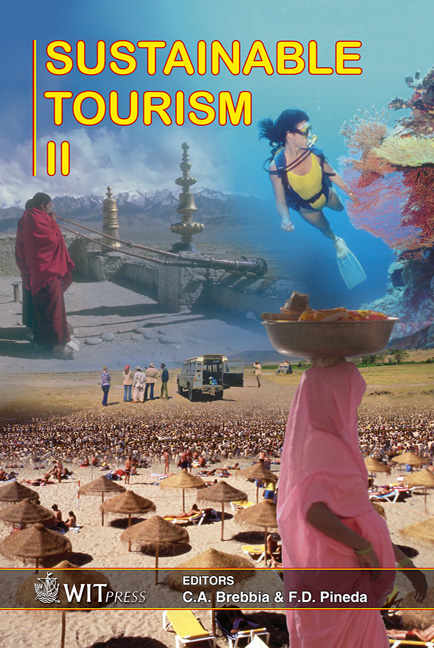Estimation Of The Tourist Carrying Capacity Of The Natural Reserve Mombacho Volcano, Granada, And The Natural Reserve Datanlí-El Diablo, Jinotega, Nicaragua
Price
Free (open access)
Transaction
Volume
97
Pages
11
Published
2006
Size
547 kb
Paper DOI
10.2495/ST060321
Copyright
WIT Press
Author(s)
M. Somarriba-Chang, M. Garnier & V. Laguna
Abstract
The study was undertaken in the Natural Reserve Mombacho Volcano (NRMV), Granada and the Natural Reserve Cerro Datanlí-El Diablo (NRDE), Jinotega. The main objectives of this research were to analyze the current tourism management in the sites, to determine the visitor carrying capacity for the walking trails and give recommendations for managing visitors in the sites. The visitor carrying capacity (VCC) works as a potential strategy to reduce recreational impacts in Natural Protected Areas [5]. Visitor carrying capacity is considered at three consecutive levels: physical carrying capacity (PCC), real carrying capacity (RCC) and effective carrying capacity (ECC) [3]. The PCC was estimated based on the dimension of each trail, the space needed for each visitor and the time required to walk it. The RCC involves correction factors such as distance between groups, soil erodability, difficulty to walk, and others. The ECC includes the Management Capacity (MC), which is given by the existence of appropriate personnel, equipment and facilities in the protected area [3]. The MC of the NRMV estimated was 74.24%. If the MC increases to 80% because of improvement in any of its components; the ECC would increase in the same proportion. According to Fundación Cocibolca, the organization managing the NRVM, scholar visitors show a different behaviour than ecotourism visitors. This rationale was considered in the calculation of the correction factors. This gave a much lower ECC for students. Therefore the maximum number of visits registered exceed the ECC calculated for students but not for ecotourists. If the trend of visits continues to increase in the following years, it will be necessary to restrict the number of visits during the top periods. On the other site, the peak El Gobiado, North sector of the NRDE has 3 defined walking trails: El Congo, El León and Campanero. The MC was 62.34% of the optimum. The scenario of MC at 80% would increase the ECC even more than in the NRMV case. It is suggested that this research could be used by the Ecotourism Project, funded by PNUD and further developed by PAGJINO applying the recommendations for visitor management on the walking trails, fauna species indicators for impact monitoring in the site, and training local tourist guides for visitor management. Keywords: protected areas, ecotourism, visitor carrying capacity, physical carrying capacity, management capacity, real carrying capacity, effective carrying capacity, MARENA, SINAP, Fundación Cocibolca and PAGJINO.
Keywords
protected areas, ecotourism, visitor carrying capacity, physicalcarrying capacity, management capacity, real carrying capacity, effectivecarrying capacity, MARENA, SINAP, Fundación Cocibolca and PAGJINO.





